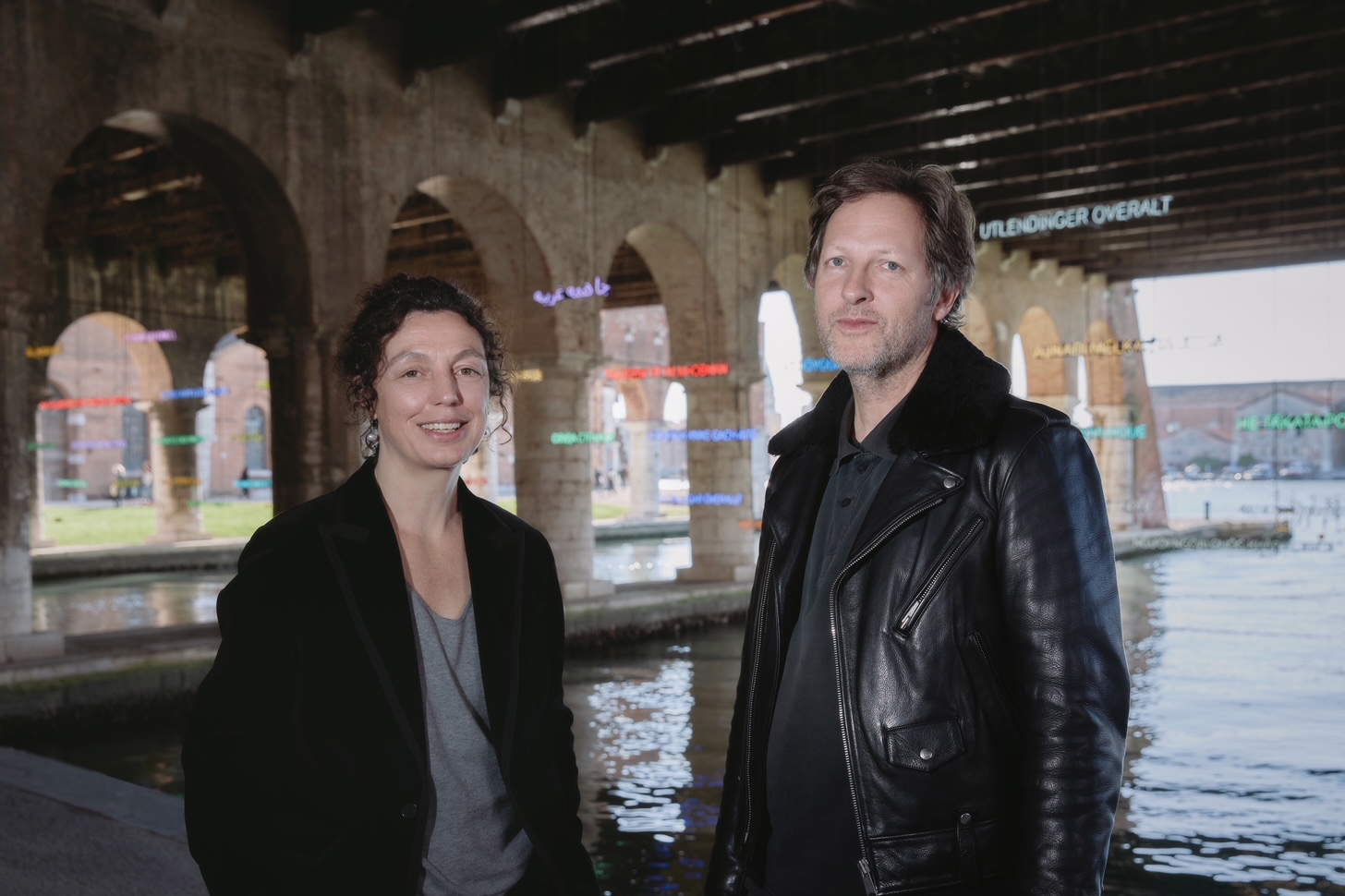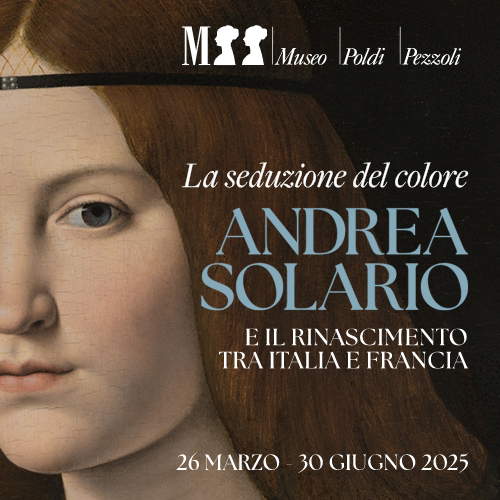Is the Biennale's "Strangers Everywhere" slogan divisive? Claire Fontaine answers.
Claire Fontaine is a duo founded in Paris in 2004 by Fulvia Carnevale and James Thornhill: one of their works, Strangers Everywhere, inspired the title of the international exhibition at this year’s Venice Biennale, curated by Adrian Pedrosa. Raja El Fani met Fulvia Carnevale without partner James Tornhill in Rome after the opening of the Venice Biennale, who had come to present a new neon signed Claire Fontaine at the Accademia di San Luca. The artistic practice of the Claire Fontaine duo is strictly Duchampian even before it is conceptual, the temptation to play on the meaning of words and echoes becoming a dogma, somewhat retro. However, when the word “foreigner” is declined and emphasized, is there not a risk of reviving, in favor of certain policies, an outdated concept and in a context, that of the Biennale, already globalized and multicultural? There is in this flaunting of “foreign” pride as thought of by Adrian Pedrosa at the Biennale, as an inherent refusal to integrate and to integrate that distracts from the more complex issues of integration and inclusion. Responding to our perplexities, in this interview, are the Claire Fontaines themselves, jointly and as one entity, in writing.
Your artistic duo, which you conceive of as a ready-made, evolutionary and impersonal collective, counter to the consumerist concept of the individualistic and self-centered artist, was born 20 years ago: in 2004, you inaugurated Claire Fontaine precisely with Strangers Everywhere, the work that you continue to reissue and that gives its title to Adrian Pedrosa’s Venice Art Biennale, Strangers Everywhere, which you first translated into sixty languages, become as many neons in the very scenic installation at the Arsenale: technical aspects about neons that you would like to share? What seduces you/us in the format of the neon writing?
Strangers Everywhere is the first work we made 20 years ago as Claire Fontaine and paradoxically it was first installed at the Mars Pavilion not far from the entrance to the Venice Biennale. Neon is a living light because it is created by two types of gas (neon and argon depending on which one you use), it is very interesting to experience it with the naked eye because you can feel the vibration inside the tubes, it is not a constant and continuous light and that is why it is very difficult to photograph. Its use comes from conceptual art, as Bruce Nauman, Joseph Kosuth and others adopted this anonymous form in the 1960s and 1970s that was typical of advertising language at the time. Even today illuminated writings in public space are associated with orders we receive from the commercial world or from those responsible for the safety of the places we pass through. It is interesting to use this medium to convey words that force us to reflect or look differently at the context and people around us.
The xenophobia inherent in the motto Strangers Everywhere in the interjection function is also everywhere today. Doesn’t this work risk contributing to racist propaganda? What do you think has changed in the global perception of foreignness and otherness 20 years later? Isn’t the term “foreigner” a bit outdated?
For us, Stranieri Ovunque is originally a self-portrait: in fact, at the Venice Biennale that bears this title we find, in addition to the group of sixty neons under the Gaggiandre, two double neons in Italian and English (which are our two nationalities) installed at the entrance to the central pavilion at the Giardini and at the entrance to the Corderie. They have nothing to do with racism or xenophobia: foreigner is neither an insult nor a word with a negative connotation. Being a foreigner or a stranger is the name of a social relationship, because everyone leaving their country becomes a foreigner. In a historical moment that sees the largest number of migrants, deportees and people extracted from their homeland in history, it takes a certain egocentrism to think that the reference to the omnipresence of foreigners is negative. All our work is developed on the decontextualization of objects or references (the ready-made is nothing more than the object that loses its use value and is exhibited in a place that is foreign to it). It is perfectly normal that we are also interested in the decontextualization of living beings.


How does it feel to title a Biennale? What are the more or less welcome aspects and effects of representing a Biennale that makes use of foreignness and diversity?
Adriano Pedrosa is a dear friend and he actually surprised us with this idea of his. We had already “lent” Strangers Everywhere in the Tupi language as a title to the edition of Panorama in which he included us along with other artists from around the world. It was very interesting to have to collectivize these two words that have been with us for twenty years-they were the title of our first monograph, in our email address, in the two exhibitions we curated ourselves in the past. The fate of certain works of art escapes the control of the authors and makes them live a life of their own. This is a wonderful experience that being an artist can offer.
How did the idea of making Claire Fontaine come about? Is it a registered trademark? A corporation? Some other legal form? How do you work together? What is the role, the expertise of each? Is it legitimate to ask if you are a couple ?
Claire Fontaine is a space of desubjectification in which we can welcome ideas and forms that reflect more than just our personalities or the forms of our interaction, between us and between us and the world. The rest is irrelevant. Obviously we are more than a couple or something fundamentally different from how couples function. For the goal is to transcend and expand what we can be together, not to preserve a closed space even when it becomes asphyxiated. We work on everything together and try not to fossilize the division of labor-which is exhausting-we have almost no help and most of the work happens in conversations and discussions.
How would you define your research and what are the goals you want to achieve?
Our research has a transformative purpose, we would like art to be able to evoke and flash possible worlds that are currently repressed and crushed. Art has as its purpose the transformation of the world and people, which then transforms its own reading through different eras. It is a way of being in the world and making the present exist as a form of the possible, without resigning ourselves to what we are told is inevitable.
Warning: the translation into English of the original Italian article was created using automatic tools. We undertake to review all articles, but we do not guarantee the total absence of inaccuracies in the translation due to the program. You can find the original by clicking on the ITA button. If you find any mistake,please contact us.



























